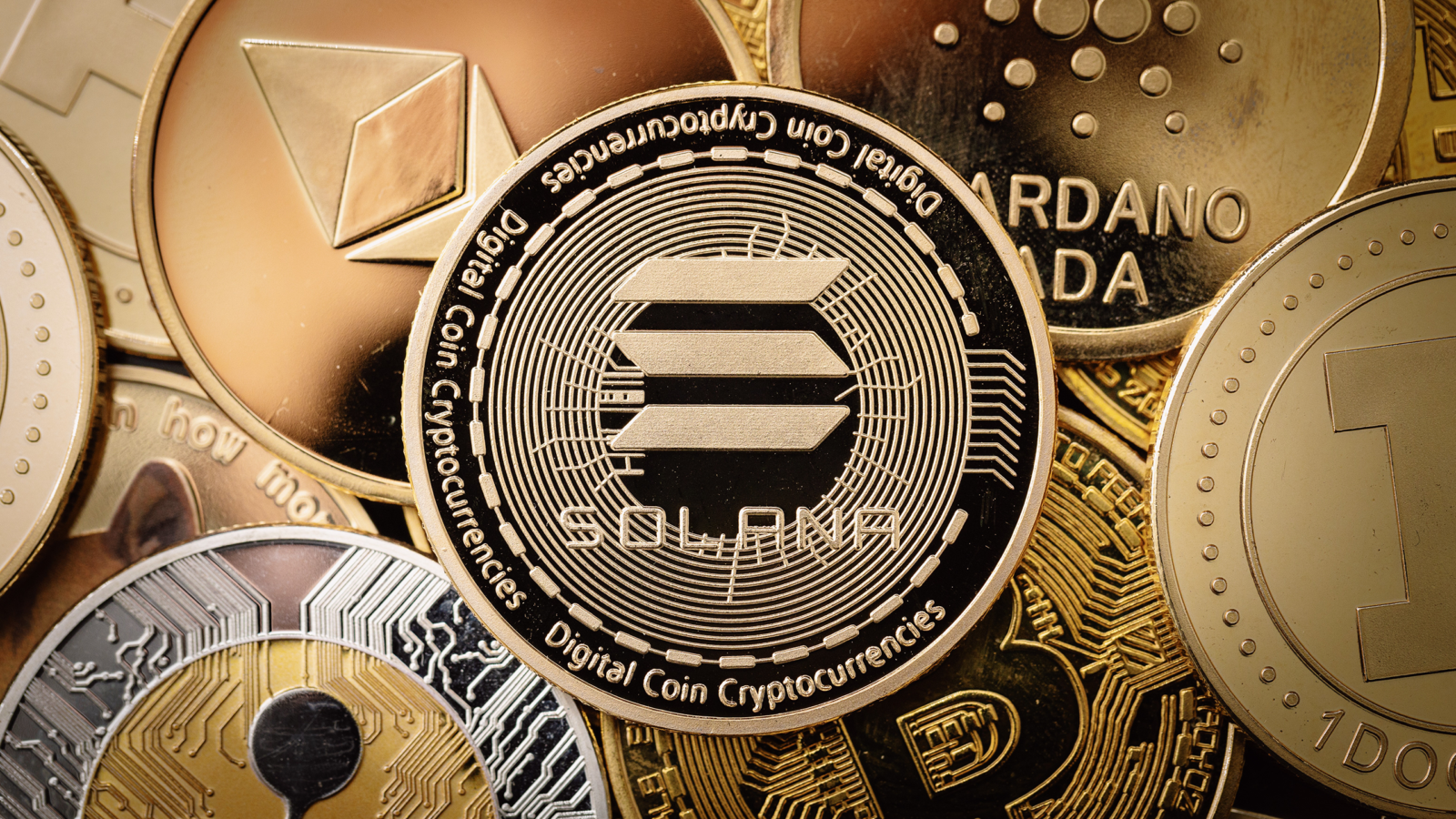Good morning and happy Wednesday.
You can buff that out.
Buffer ETFs got a big endorsement last year, when the University of Connecticut’s $600 million endowment opted to switch to them from most of its hedge fund holdings. So far, that strategy has paid off, the chair of its investment committee told Pensions & Investments. The ETFs, which use options to help limit losses, are designed to insulate investors from volatility. The products are hot sellers, and they’ve worked well so far, according to a recent report from Morningstar. However, that appears to be due to sales coinciding with a rising market and investors buying the ETFs near the beginnings of their “outcome periods,” or the time frames in which they’re designed to deliver a range of returns.
With this year’s wild market volatility, we’ll be watching to see how well buffer ETFs work for investors. It may be their biggest test yet. We’ve got the popcorn ready.
Altcoin ETFs Test Demand for Anything Other Than Bitcoin

Bitcoin ETFs have been all the rage since they launched last year, but what about funds for smaller coins?
The first XRP and Solana ETFs could become test cases on whether there’s interest in the market for crypto-themed funds featuring lesser-known currencies. Apparently, Teucrium Investment Advisors thinks there is: On Tuesday, the firm launched its 2x Long Daily XRP ETF, a leveraged fund that uses futures and options and trades on NYSE Arca as XXRP.
And one big name, Fidelity, sees additional opportunity. The company is seeking regulatory approval for a spot-price Solana exchange-traded product that would trade on Cboe. Currently there are no US-listed spot Solana funds in operation, although the first futures-based Solana ETFs launched March 20.
“Solana is one of the ‘Big 3’ after bitcoin and ethereum,” said financial consultant Tyrone Ross Jr., the former CEO and cofounder of Onramp Invest. “There will be muted interest for these, as most financial advisors are still focused on digesting bitcoin and the ethereum ETFs.”
Three’s Company
The runaway success of bitcoin in ETF form has benefited several companies, most notably BlackRock, whose iShares Bitcoin Trust ETF represents $48 billion in assets, more than three times that of the next-biggest spot bitcoin fund, the $16 billion Fidelity Wise Origin. The ether ETFs on the market have reached about $7.5 billion in total assets, according to data from VettaFi.
“The ‘use’ for Solana comes from using the actual blockchain, which is the equivalent to ‘high-speed’ rail, based on its ability to compute transactions quickly,” Ross said. “You lose that when you put it in an ETF, unless you’re just looking for the potential price appreciation.”
There are just two US-listed futures-based Solana ETFs available:
- Volatility Shares Solana ETF ($3 million in assets, 95 basis points in net fees)
- Volatility Shares 2x Solana ETF ($4 million, 185 basis points)
Bitcoin dominates the crypto space, and demand for anything else may take time, said Mike Alfred, managing partner of Alpine Fox, a private investment partnership. “That could change after the market has more clarity on tariffs and short-term macro headwinds,” he said.
Into the Ether. If the uptake of ether ETFs was low relative to those with exposure to bitcoin, Solana ETFs could be low relative to ether funds, said Bryan Armour, director of passive strategies research for North America at Morningstar Research Services. It’s notable that Grayscale’s Solana Trust is relatively small, at just $66 million, he said.
Smaller cryptocurrencies will likely have even more of a challenge building demand in ETFs, he said. “Ethereum’s struggles might be a warning sign for some of the other cryptocurrencies entering the ETF market,” Armour said. “It just seems like with each one of these, there’s a magnitude less down from the bitcoin [ETFs]. It might end up being more of a niche product.”
Are Active ETFs The Right Fit?

Active ETFs are on the rise — but are they right for your clients? With features like tax efficiency and intraday trading, along with the potential for benchmark-beating performance, they offer a compelling blend of flexibility and control.
But with so many vehicles out there — mutual funds, SMAs, ETFs, and more — picking the right one isn’t always simple.
That’s where Allspring comes in. We help advisors cut through the noise, so you can focus on what matters most: client outcomes.
Explore how Allspring and active ETFs can work for your clients.*
*Carefully consider a fund’s investment objectives, risks, charges, and expenses before investing. For a current prospectus and, if available, a summary prospectus, containing this and other information, visit allspringglobal.com. Read it carefully before investing.
Investing involves risk, including the possible loss of principal. Allspring ETF Funds are not available for distribution outside of the United States. Allspring Funds Distributor, LLC (Member FINRA/SIPC).
Victory Capital Brings the Pioneer Investments Brand Back From Extinction
Dire wolves — the fluffy white apex predators featured in Game of Thrones that died off over 12,000 years ago — may have been brought back from extinction by a gene-editing company this week. And that’s not the only news of a worthy comeback.
Pioneer Investments has been brought back from the dead after a deal between Victory Capital and Amundi led to a rebranding. It’s part of a distribution play with benefits for two major asset managers. For advisors, it means a wider range of investment capabilities available under one roof.
Company DNA
Victory Capital assumed ownership of Amundi US in exchange for a roughly 26% stake in Victory’s business this month. Now, the $119 billion in assets-under-management Amundi US line is being rebranded as Pioneer Investments. (Amundi acquired Pioneer in 2017 and carried the Pioneer branding until 2021.) But the deal is hardly another M&A or asset-management-industry consolidation story, as it’s a distribution play for both Victory and Amundi on a global scale, said Mario Favetta, relationship manager at Fuse Research Network. For investors and advisors, “it expands the product set that’s available to them from the combined team at Victory and gives them a lot of new capabilities to fill out an allocation, particularly with fixed income,” he said.
Victory has 12 investment franchises and has built up its business in part through major acquisitions. In 2018, for example, it snapped up USAA’s $69 billion asset management business. Under the terms of the Victory deal closed on Monday:
- Paris-based Amundi gets to distribute Victory’s US active management products outside the US.
- Amundi supplies its foreign strategies for Victory to distribute within the US.
- Victory’s assets under management reach $300 billion.
An Evolving Business: The structure of the agreement is all about distribution, but there are other important aspects, and the return of Pioneer is notable, Favetta said.
“It’s a smart move for them. The Pioneer brand had a long history. It was very well-respected,” he said. “Most advisors who are in the business today remember the Pioneer brand. There is a lot of equity remaining in the Pioneer brand.”
Extra Upside
- Going for Gold. Sales of gold ETFs saw a three-year high in the first quarter.
- A Mew Strategy. The first US-listed CAT bond ETF is out.
- Actively Managed ETFs Offer Many Potential Benefits But Are They Right For You? Follow the route to active ETFs to find out.**
** Partner
ETF Upside is written by Emile Hallez. You can find him on LinkedIn.
ETF Upside is a publication of The Daily Upside. For any questions or comments, feel free to contact us at etf@thedailyupside.com.

